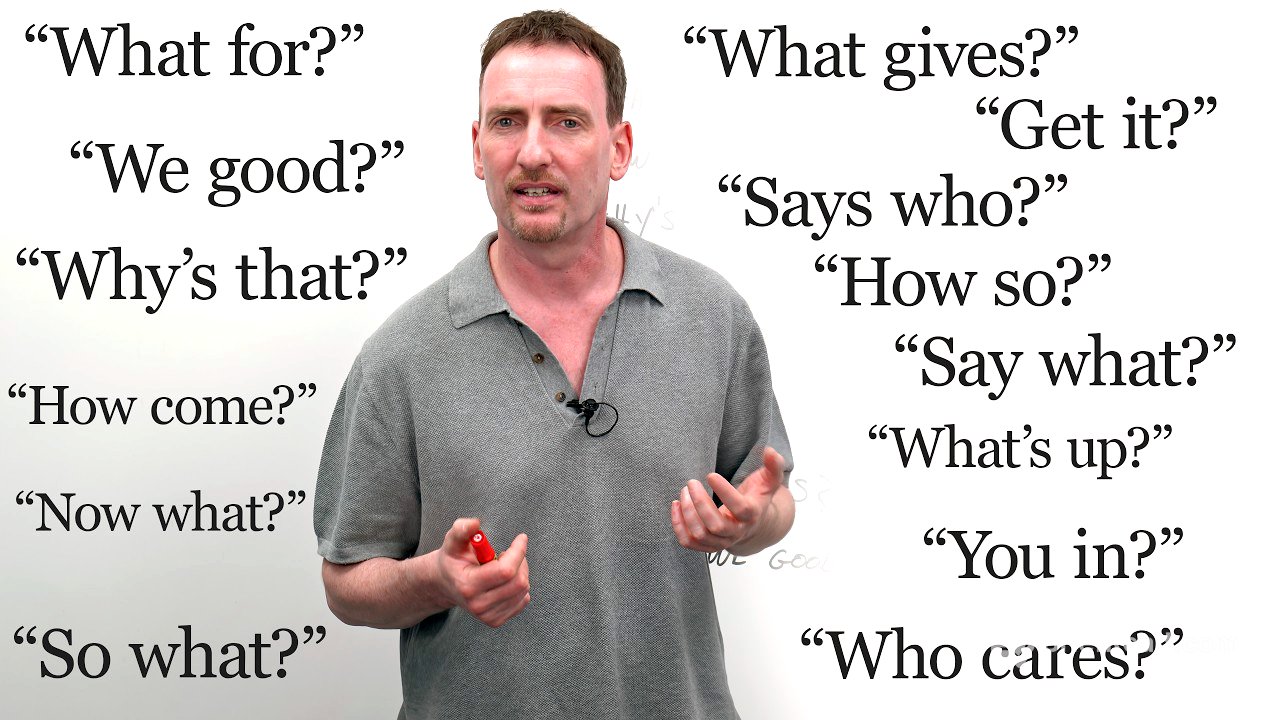TLDR;
This video provides practical guidance on understanding and responding to common two-word questions used by native English speakers. It emphasizes the importance of understanding the context of these questions rather than focusing on strict grammar. The lesson covers a variety of questions, explaining their meanings, appropriate responses, and potential nuances.
- Understanding two-word questions requires attention to context.
- Many of these questions are shortened forms of longer inquiries.
- The tone and situation influence the meaning and appropriate response.
Two-Word Questions in English [0:00]
The video introduces the topic of two-word questions in English, highlighting that many learners struggle with these questions due to their brevity and contextual nature. It stresses the importance of understanding the situation and conversation surrounding the question rather than overanalyzing the words themselves. The lesson aims to provide practical help for interacting with native English speakers by explaining the meaning and usage of these common questions.
What for? How come? Why's that? [0:46]
The phrases "What for?", "How come?", and "Why's that?" are all similar ways of asking "Why?". "What for?" inquires about the purpose of something. "How come?" is a direct way of asking for a reason. "Why's that?" is used to ask for clarification or a reason behind a statement someone has made. While all three questions essentially ask "why," they are used in slightly different contexts to inquire about the reason or purpose behind an action or statement.
Say what? [1:45]
"Say what?" is a response used when someone didn't hear or understand what was said, or when they are in disbelief. The meaning can vary based on tone, indicating either a request to repeat the statement or disbelief. It's important to pay attention to the speaker's tone to understand whether they simply need clarification or are expressing incredulity.
What's up? [2:15]
"What's up?" is a slang expression similar to "What's going on?" or "How are you doing?". It's a casual greeting or way to inquire about someone's current activities or state. The expected response is usually a brief update or a simple acknowledgment.
So what? Who cares? [2:33]
"So what?" and "Who cares?" both express a lack of interest or importance regarding a statement. They can indicate that the speaker doesn't find the information relevant or significant. However, "So what?" can also be used to ask about the consequences or implications of a situation, depending on the context.
Says who? [3:31]
"Says who?" is a challenging question that questions the authority or source behind a statement or instruction. It implies that the speaker is skeptical and wants to know who authorized the information. Using this phrase can be confrontational, so it should be used carefully.
Get it? [4:16]
"Get it?" is a way of asking "Do you understand?". It's used to confirm whether someone has comprehended an explanation or instruction. Similar phrases include "Got it?" and the expected response is confirmation of understanding.
Now what? [4:31]
"Now what?" is used to ask about the next steps or the consequences of a completed action or current situation. It seeks to determine what should be done moving forward or what the result of a recent event will be. The question prompts a discussion about future actions or outcomes.
How so? [4:47]
"How so?" is a request for explanation or clarification. It asks the speaker to elaborate on a statement or idea to explain how it is possible or true. The question invites the speaker to provide more details or reasoning to support their claim.
You in? Who's in? [5:13]
"You in?" and "Who's in?" are used to ask if someone wants to participate in a project or activity. "You in?" is directed at an individual, while "Who's in?" is directed at a group. The questions are quick ways to gauge interest and recruit participants.
What gives? [5:50]
"What gives?" is a slang expression used to express surprise or ask for an explanation when something unexpected happens. It's similar to asking "Why did you do that?" or "Why is this happening?". The phrase often carries a tone of confusion or mild shock.
You good? [6:21]
"You good?" is a way of asking "Are you okay?" or "Do you understand?". It's used to check on someone's well-being or comprehension. The phrase is similar to "Get it?" and seeks to ensure that the person is alright or understands the situation.
We good? [6:31]
"We good?" can mean "Are we ready?" or "Do we have a problem?". It's used to check if everyone is prepared to proceed or to resolve a misunderstanding. The question seeks to confirm that there are no remaining issues and that everyone is in agreement to move forward.









